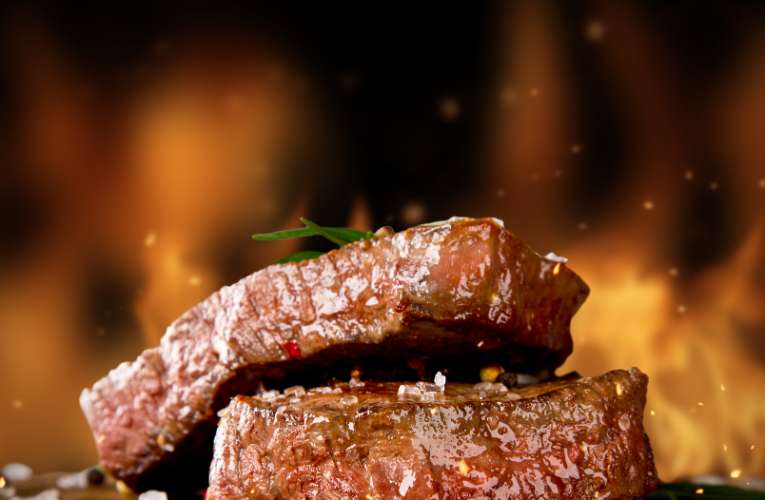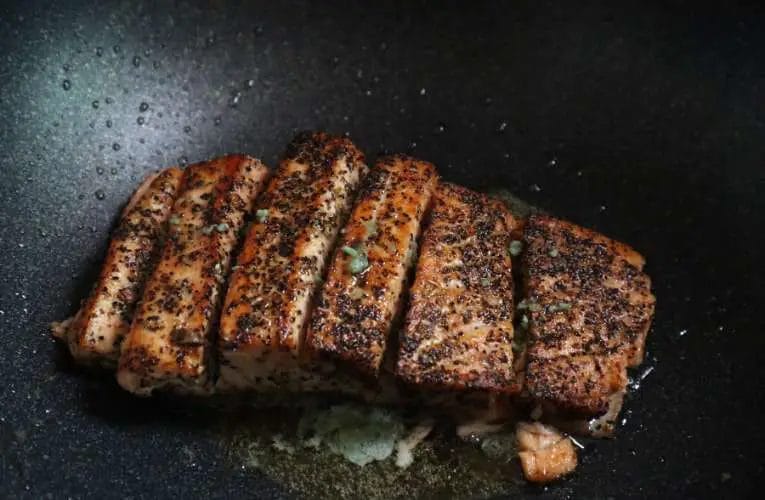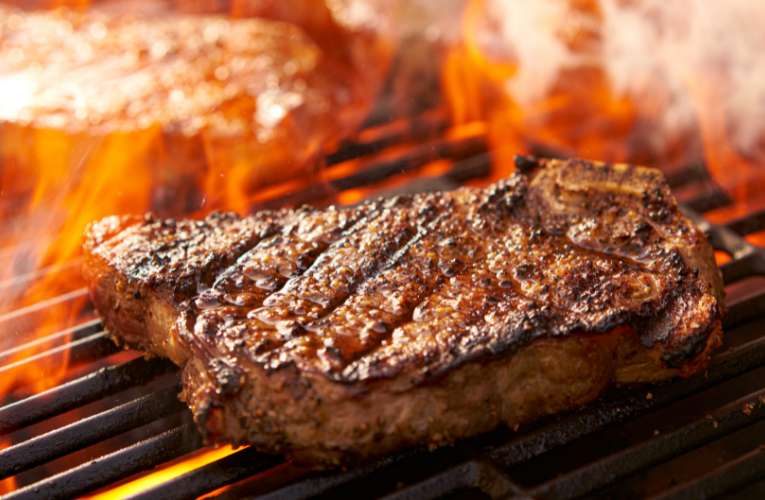Steak is a popular dish that many beginners attempt to cook, but it can be a challenging task. Achieving the perfect steak requires knowledge of various cooking techniques and the ability to troubleshoot common issues that arise during the process.
In this article, we will explore the most common steak cooking issues beginners face and provide detailed troubleshooting tips to help you overcome these challenges and achieve a deliciously cooked steak.
Overcooking
Overcooking is a common issue that can result in a dry and tough steak. It is essential to cook your steak to the desired level of doneness without surpassing it. Here are some troubleshooting tips to avoid overcooking:
1. Utilize the Touch Test
Use the touch test to determine the doneness of your steak.
Gently press the center of the steak with your fingertip or the back of a spoon.
A rare steak will feel soft and squishy, while a medium steak will have some give but still feel firm, and a well-done steak will be firm to the touch.
2. Use a Meat Thermometer
Invest in a meat thermometer to accurately measure the internal temperature of your steak.
For a rare steak, aim for an internal temperature of 125°F (52°C), 135°F (57°C) for medium-rare, 145°F (63°C) for medium, and 160°F (71°C) for well-done.
Insert the thermometer into the thickest part of the steak, away from the bone, for an accurate reading.
3. Learn Visual Cues
Familiarize yourself with visual cues to determine the doneness of your steak.
A rare steak will have a cool, red center, while a medium-rare steak will have a warm, pink center.
A medium steak will have a mostly pink center with a hint of juiciness, and a well-done steak will have a uniformly browned interior.
By utilizing these troubleshooting techniques, you can avoid overcooking your steak and ensure it is cooked to your desired level of doneness.
Undercooking
Undercooking your steak can be equally problematic, as it can lead to potential health risks and an unsatisfying eating experience. To troubleshoot undercooking, consider the following tips:
1. Account for Carryover Cooking
Understand the concept of carryover cooking, which refers to the continued rise in internal temperature after removing the steak from the heat source.
To prevent undercooking, remove the steak from the heat source when it is a few degrees below the desired final temperature.
Allow the steak to rest for a few minutes before serving, during which it will continue to cook and reach the desired level of doneness.
2. Use a Meat Thermometer
A meat thermometer is invaluable in preventing undercooking as well.
Insert the thermometer into the thickest part of the steak, away from the bone.
Ensure the thermometer reads the desired internal temperature for your preferred level of doneness.
By accounting for carryover cooking and utilizing a meat thermometer, you can avoid the issue of undercooked steaks and enjoy a safe and perfectly cooked meal.

Uneven Cooking
Another common issue beginners face when cooking steak is uneven cooking throughout the meat. This can result in some parts being overcooked while others remain undercooked. Here are some troubleshooting tips to promote even cooking:
1. Ensure Even Thickness
To achieve even cooking, ensure your steak has a consistent thickness.
If necessary, use a meat mallet or a rolling pin to gently pound the steak to an even thickness.
This ensures that all parts of the steak cook at the same rate.
2. Preheat the Grill or Pan
Uneven heat distribution can also contribute to uneven cooking.
Preheat your grill or pan thoroughly before cooking to ensure even heat distribution.
This will help promote uniform cooking throughout the steak.
By ensuring even thickness and preheating your cooking surface, you can minimize the problem of unevenly cooked steaks and enjoy a uniformly tender and flavorful meal.
Dryness or Lack of Juiciness
Dryness or lack of juiciness in steak is a common issue that can leave your meal less enjoyable. Here are troubleshooting tips to address this problem:
1. Select the Right Cut
Choose cuts with good marbling, which refers to the intramuscular fat distributed throughout the meat.
Cuts with more marbling tend to be juicier and more flavorful. Examples of well-marbled cuts include ribeye and striploin.
2. Proper Resting Time
Allow your steak to rest for a few minutes after cooking.
Resting allows the juices to redistribute throughout the meat, resulting in a juicier steak.
Tent the steak with aluminum foil during the resting period to retain heat.
3. Marinating or Brining
Marinating or brining your steak before cooking can enhance juiciness.
Marinades or brines with ingredients like citrus juices, vinegar, or salt can help tenderize and infuse flavor into the meat.
By selecting well-marbled cuts, allowing proper resting time, and utilizing marinades or brines, you can combat dryness and enjoy a moist and succulent steak.
Lack of Flavor
A lack of flavor in your steak can be disappointing. To troubleshoot this issue, consider the following tips:
1. Season Liberally
Season your steak generously with salt and pepper before cooking.
Salt helps enhance the natural flavors of the meat, resulting in a more flavorful steak.
Experiment with additional spices or herbs to add depth to the flavor profile.
2. Proper Resting Time
Allowing your steak to rest after cooking not only contributes to juiciness but also enhances flavor development.
The resting period allows the flavors to meld and intensify, resulting in a more flavorful steak.
3. Post-Cooking Seasoning
Add a finishing touch of seasoning after cooking.
Sprinkle some sea salt or drizzle flavored butter on the steak while it is still hot to enhance the flavor.
By seasoning your steak adequately, allowing proper resting time, and adding post-cooking seasoning, you can elevate the flavor of your steak and make it a truly satisfying culinary experience.
Toughness
Toughness is a common issue that can make your steak chewy and less enjoyable. To troubleshoot this issue, consider the following tips:
1. Choose Tender Cuts
Select cuts that are naturally tender, such as filet mignon or ribeye.
These cuts have less connective tissue, resulting in a more tender steak.
2. Tenderizing Techniques
Utilize tenderizing techniques to break down tough muscle fibers.
Consider using a meat tenderizer to physically tenderize the steak by piercing it with small blades.
Alternatively, marinating the steak with acidic ingredients like vinegar or citrus juices can help tenderize the meat.
3. Lower Temperature Cooking
Cook your steak at a lower temperature for a longer duration.
Slow cooking methods, such as braising or sous vide, can help break down collagen and tenderize the meat.
By choosing tender cuts, employing tenderizing techniques, and using lower temperature cooking methods, you can overcome the issue of toughness and enjoy a tender and melt-in-your-mouth steak.

Conclusion
Cooking the perfect steak is a skill that can be mastered with practice and knowledge.
By troubleshooting common steak cooking issues such as overcooking, undercooking, uneven cooking, dryness, lack of flavor, and toughness, you can overcome these challenges and elevate your steak cooking skills.
Remember to choose the right cut, utilize proper cooking techniques, and experiment with different seasonings and tenderizing methods. With patience and perseverance, you’ll be able to cook a steak that is tender, flavorful, and cooked to perfection. Happy cooking!
How do I prevent my steak from sticking to the grill or pan?
To prevent your steak from sticking to the grill or pan, ensure that the cooking surface is properly preheated before placing the steak on it. Additionally, make sure your steak is dry and lightly coated with oil or cooking spray to create a barrier between the meat and the cooking surface.
What should I do if my steak is too salty?
If your steak turns out too salty, you can try soaking it in a bowl of cold water for about 30 minutes to an hour. This will help draw out some of the excess salt. Alternatively, you can balance the saltiness by serving the steak with a sauce, such as a creamy mushroom sauce or a tangy chimichurri.
How can I achieve a nice sear on my steak?
To achieve a nice sear on your steak, ensure that your cooking surface is very hot before placing the steak on it. Pat the steak dry with a paper towel to remove any excess moisture, as moisture can hinder the searing process.
Also, avoid moving the steak too frequently while cooking to allow a crust to form on the surface.
What should I do if my steak is too rare or undercooked?
If your steak is too rare or undercooked for your liking, you can finish cooking it by transferring it to a preheated oven.
Place the steak on a baking sheet and continue cooking it at a low temperature until it reaches your desired doneness. Keep a close eye on the internal temperature to avoid overcooking.
How can I make my steak more tender without using a meat tenderizer?
A5. If you don’t have a meat tenderizer, you can try marinating your steak in an acidic mixture, such as a combination of vinegar, citrus juice, and herbs. The acid will help break down the muscle fibers and tenderize the meat.
You can also consider using a natural meat tenderizer, such as papaya or pineapple, which contain enzymes that help tenderize the meat.
How can I add flavor to my steak without overpowering it?
A6. To add flavor to your steak without overpowering it, consider using dry rubs or marinades with a balance of herbs, spices, and complementary flavors.
Opt for ingredients like garlic, rosemary, thyme, or a touch of balsamic vinegar for a subtle enhancement. Additionally, let the steak rest after cooking to allow the flavors to develop and meld together.
What should I do if my steak is too dry?
If your steak turns out too dry, try marinating it before cooking to help retain moisture. You can also try basting the steak with melted butter or a flavorful sauce while cooking. Another option is to slice the steak against the grain, which can help make it feel more tender and juicy when eating.
Can I use a slow cooker for cooking steak?
While slow cookers are great for tougher cuts of meat that benefit from slow and low cooking, they are not typically recommended for cooking steak. Slow cooking steak can result in an overly tender and mushy texture.
It’s best to use other cooking methods, such as grilling, broiling, pan-searing, or sous vide, for steak to achieve the desired texture and flavor.

